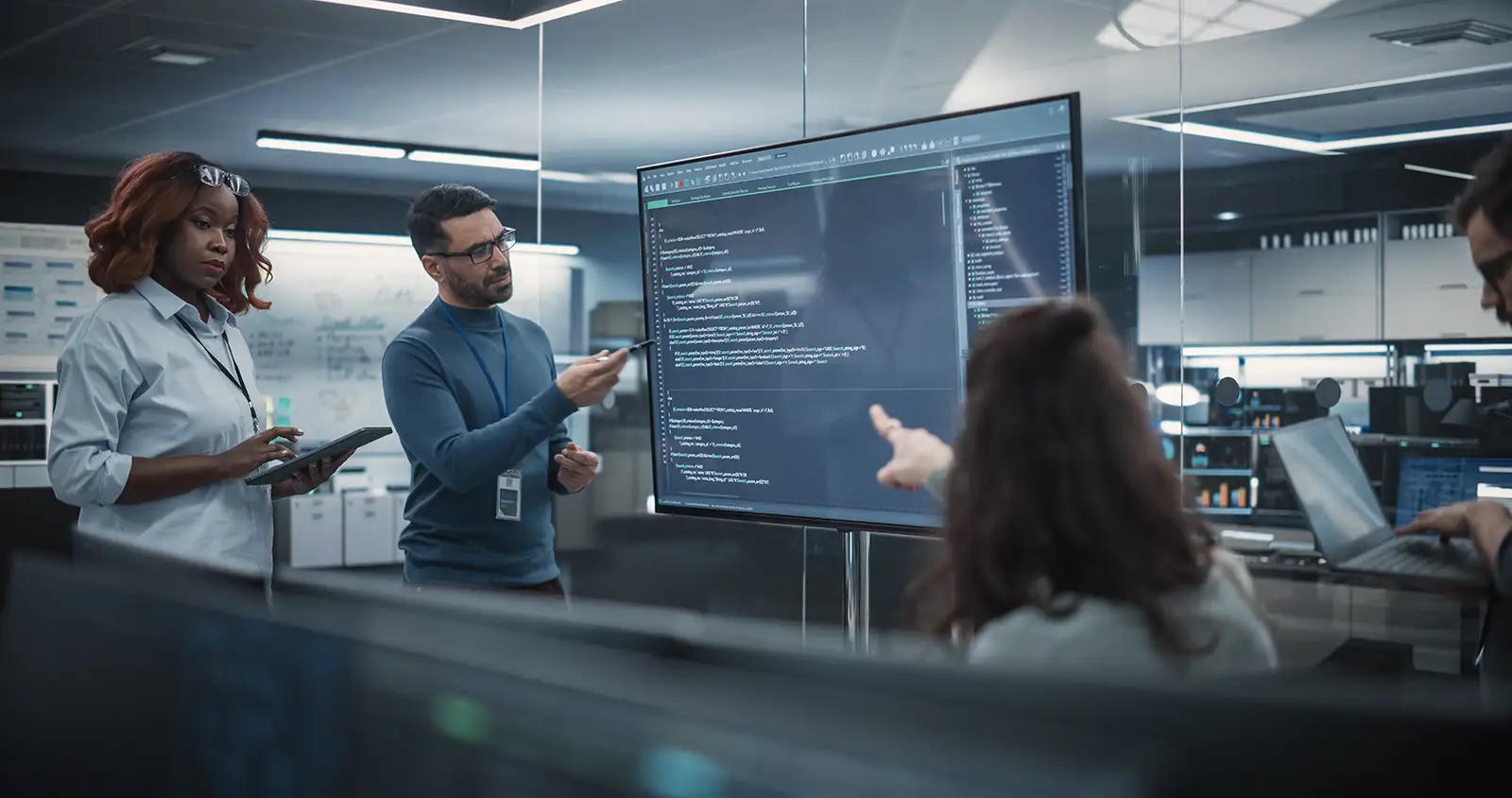Artificial intelligence is having its “iPhone moment” in public perception — but not in enterprise reality. In other words, this is a transformative turning point where a new technology becomes widely adopted, revolutionizing industries and changing human behavior. Much like what happened when the iPhone changed how people interacted with devices, businesses need to adapt to these new behaviors.
For many leaders, AI still feels like magic. But once you start embedding AI and intelligent agents into your business-critical systems, the shine can fade fast. The hype around AI is deafening, yet its impact inside most organizations is surprisingly quiet. And everyone’s talking about AI like it’s the future. But most companies are still wrestling with the present.
Here’s the reality: The technology works and the algorithms deliver, but the real roadblock is change management.
CTOs and VPs of Engineering have felt the friction. The initial proof-of-concept dazzles. But as soon as AI solutions meet the realities of enterprise systems, momentum slows. Why? Years of entrenched workflows and rigid integrations hold organizations tightly in place.
At Growth Acceleration Partners (GAP), we’ve seen how AI adoption fails without intentional change management. Recently, our General Manager of GAPVelocity.ai spoke with a senior executive in the travel and hospitality sector whose team is running multiple AI pilots in customer support. The technology stack is strong, the business case is clear — yet progress has slowed to a crawl.
The culprit is change management.
Processes, products and people are tightly bound to years of established workflows and integrations. Embedding AI into enterprise systems isn’t like downloading an app — it’s the slow, unglamorous, essential work of rewiring tightly coupled systems, rethinking data flows, updating governance and redesigning operating procedures. Without that work, AI can’t scale.
Why Change Management is the Bottleneck
As Bret Taylor, Chairman of OpenAI, put it: “AI isn’t just a technology project — it’s a people project.”
We see that every day. Here’s why organizations stall when AI moves from pilot to production:
Challenge: Processes are hard-coded.
Solution: Redesign operations alongside the tech.
- Legacy workflows haven’t really evolved much. The old workflows weren’t built for machine learning loops, automated agents or real-time analytics and now is the time to make that adjustment. But adopting AI isn’t just about a software upgrade; it’s a complete operational overhaul.
- Take some time to really rethink what’s needed and how things can (and should) work in this new environment. You need to approach AI implementation as an opportunity to completely re-architect workflows, integrations and governance — not just as a simple add-on. This means mapping out dependencies, cutting out redundant steps and building flexible systems that can evolve as AI capabilities do.
Challenge: Employees tend to resist what they don’t understand.
Solution: Provide training.
- Highly experienced engineers are typically eager to learn new things, but without guidance, they may struggle to identify which tasks can be automated and where their skills add value. Without proper training, adoption would be hard.
- In addition to education, you need guiderails and some starting points. You must identify where AI can handle repetitive tasks and where employees can do creative work. Then, offer specific training and incentives so employees see AI as a career amplifier.
Challenge: Adoption isn’t automatic.
Solution: Incorporate a cultural change in the deployment plan.
- Scaling AI is not about culture as much as it is about technology. It requires training people to understand why it is important — “We’ve always done it this way” — to a more innovative one: “What if AI could do this better?” This means you need a change in mindset, new skills and a willingness to experiment.
- To make this succeed, set clear adoption milestones and encourage experimentation. And just as important, you need to celebrate early wins. Create a safe space where teams can test ideas, fail fast and learn from the experience as part of the change process. The aim is to make “AI-first” thinking a normal part of everyone’s daily work so AI becomes a helpful, integrated tool rather than a disruption.
Challenge: People need trust to accept AI.
Solution: Be transparent and keep communicating.
- Employees want to know why AI is being used, how it will affect their work, and what the company is doing to ensure it’s fair and accurate. When teams understand what AI does AND why it’s being used, they’re far more likely to use it in daily routines.
- Share the purpose and safety checks for AI often. Show how decisions are made, how outputs are validated and how fairness is maintained. Involving employees in feedback loops gives them a sense of ownership over the transformation.
GAP’s structured approach to AI through three main pillars: internal digital transformation, engineering and delivery services, and client strategy development. So when we talk about AI at GAP, the idea of “change management” isn’t something we just tack on at the end. We see the process of change management as a foundational workstream, just as important as the engineering itself. By doing this, we make sure our new systems are adopted successfully by our teams and integrated smoothly into our processes. It’s certainly about more than just the tech.
Automation and upskilling go together:
When AI handles the boring, repetitive stuff, we get to redefine jobs. This opportunity for positive change helps employees see AI as a way to level up their skills, not a threat to their jobs.
We don’t go from zero to a hundred:
This is not a “Ready, Fire, Aim” situation. We intentionally start small with pilot programs to test our approach. Then we quickly analyze and adjust before we scale. We also set clear goals and make sure we leave time to tweak things and listen to feedback.
Update internal systems:
Our engineering teams get busy modernizing everything under the hood. From data flows to system integrations, it’s all about making sure our technology is ready for AI and built to last.
Earning trust is a must:
Now is the time for psychological safety at work when it comes to tech. We make it a point to explain how the AI works, how we check its output and how we ensure it’s fair. This kind of transparency helps turn doubters into champions.
AI is an ongoing effort:
- The job isn’t done at launch. We stick around to provide more training, make improvements and optimize the AI so our teams keep getting value from it for years to come.
The reward for this effort? AI that truly lasts.
AI is something almost every executive team wants, but turning that potential into a business reality is a much more complex story. While AI is often marketed as a revolution, within many companies, it feels more like an unfinished experiment.
When change management is integrated into AI implementation, companies can bridge the gap between potential and performance. They build trust, preparedness and resilience and they prepare their workforce for the future.
The winners in the AI race won’t be those with the flashiest demos, but those who master the curve of change. GAP helps leaders do exactly that: deliver AI that not only launches but endures.



